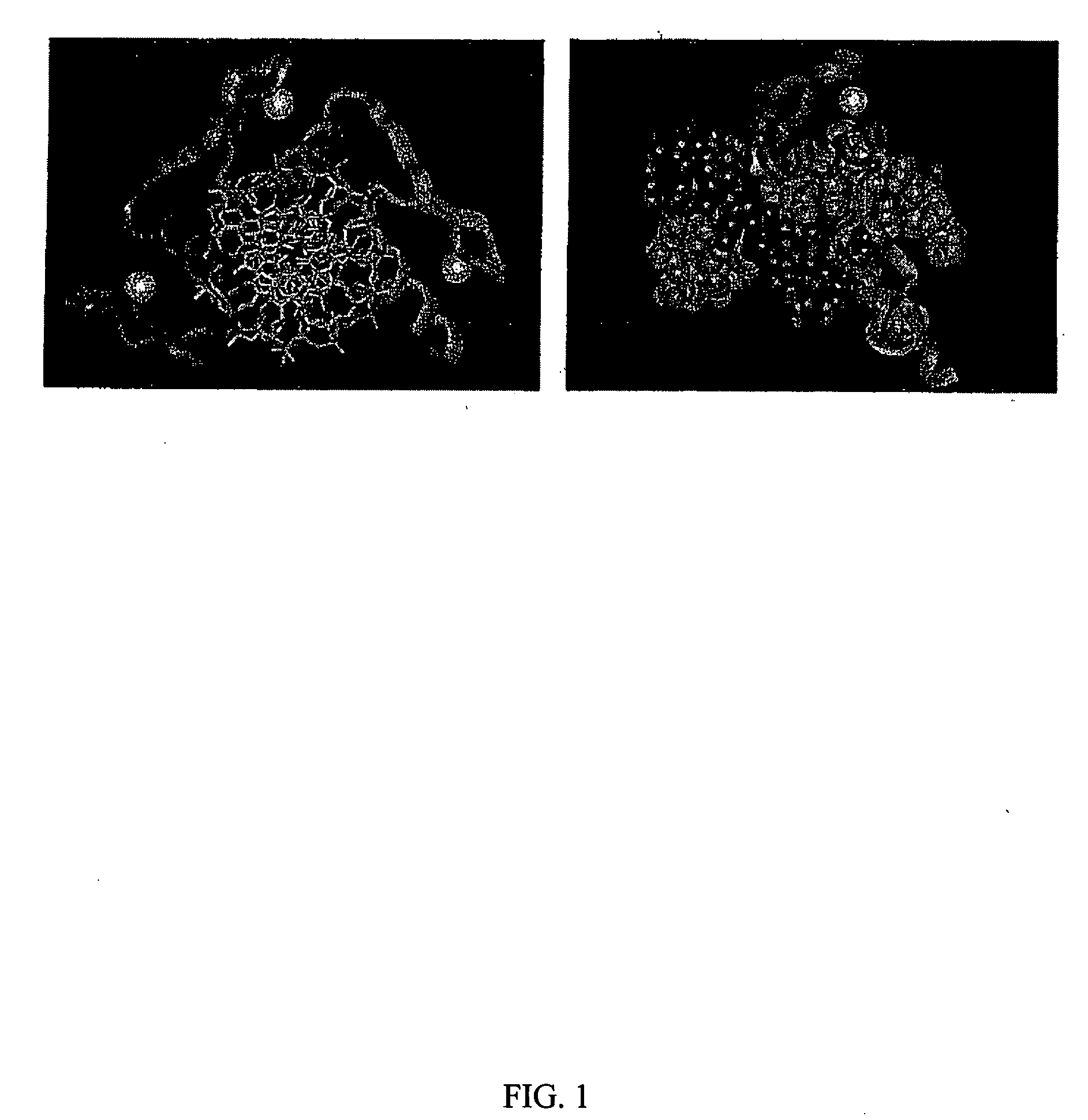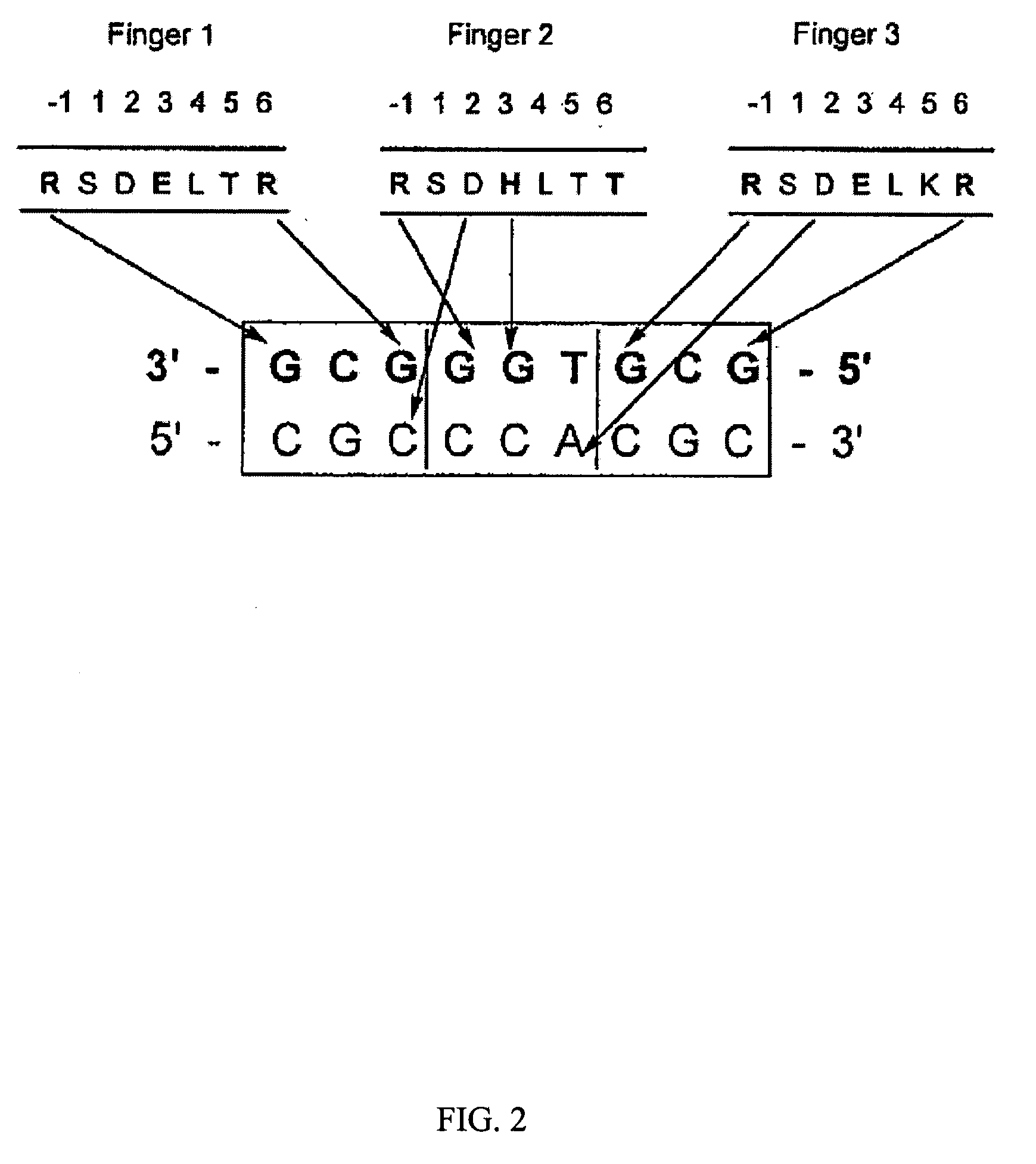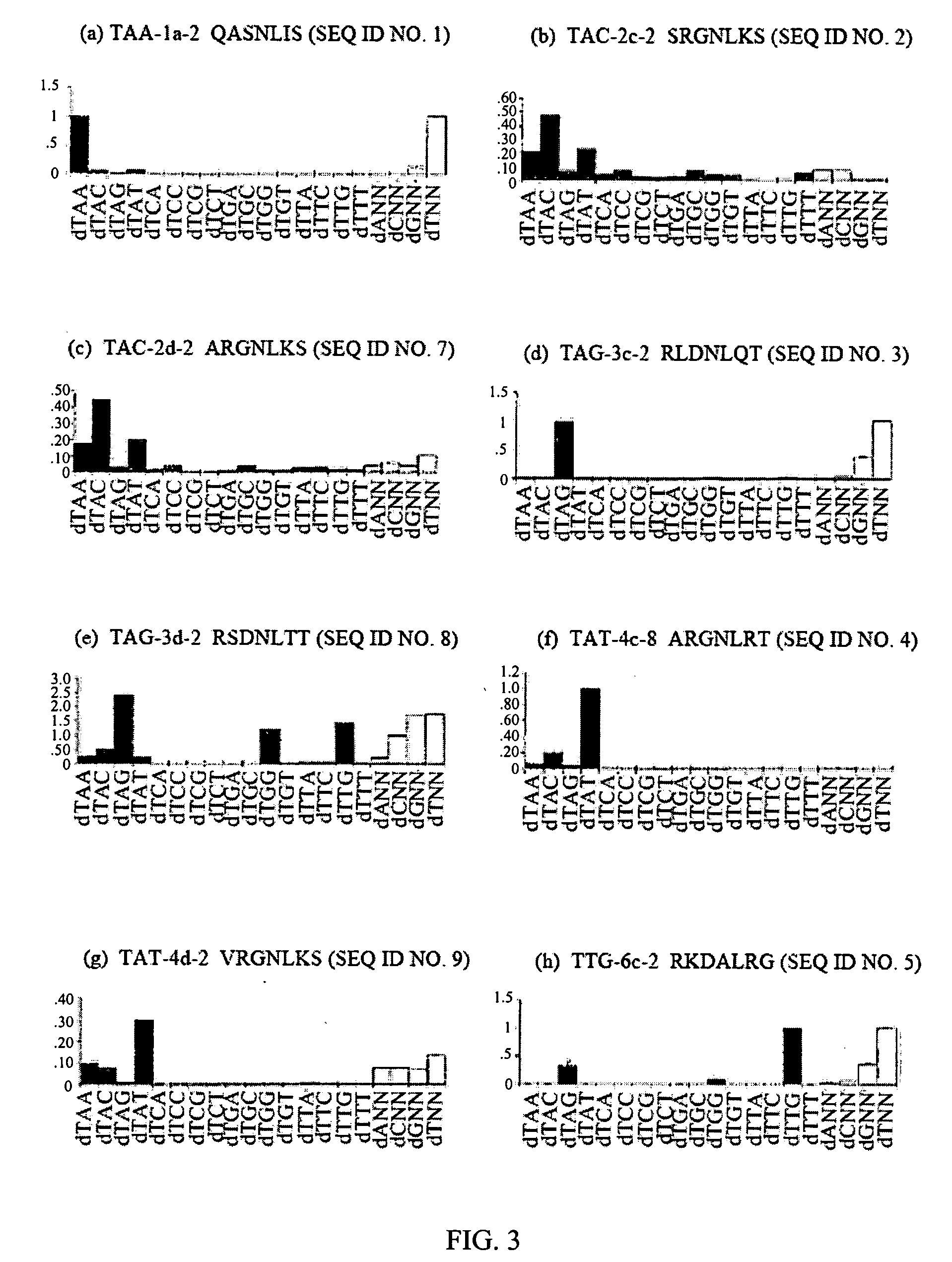Zinc finger binding domains for tnn
a technology of zinc finger and binding domain, which is applied in the direction of peptides, drug compositions, peptides/protein ingredients, etc., can solve the problems of time-consuming and inability to rationalize the design of zinc proteins
- Summary
- Abstract
- Description
- Claims
- Application Information
AI Technical Summary
Benefits of technology
Problems solved by technology
Method used
Image
Examples
example 1
Selection and Characterization of Zinc Finger Domains with Unique Binding Specificity for 5′-(TNN)-3′ DNA Sequences
Introduction
[0173] Cys2-His2 zinc finger proteins are one of the most common DNA-binding motifs found in eukaryotic transcription factors. These zinc fingers are compact domains containing a single amphipathic α-helix stabilized by two β-strands and zinc ligation. Amino acids on the surface of the α-helix contact bases in the major groove of DNA. Zinc finger proteins typically contain multiple fingers that make tandem contacts along the DNA. The mode of DNA recognition is principally a one-to-one interaction between amino acids from the recognition helix and DNA bases. One finger usually recognizes 3 base pairs (bp). As these fingers function as independent modules, fingers with different triplet specificities can be combined to give specific recognition of longer DNA sequences. This simple, modular structure of zinc finger domains and the wide variety of DNA sequen...
example 2
Design of New Randomized Zinc Finger Libraries with Changed Linker Regions
Introduction
[0207] The linker region that connects neighboring zinc fingers is an important structural element that helps control the spacing of the fingers along the DNA site. The most common linker arrangement has five residues between the final histidine of one finger and the first conserved aromatic amino acid of the next finger. Roughly half of the linkers of zinc fingers found in the Transcription Factor Database conform to the consensus sequence TGEKP (SEQ ID NO: 412). The structural role of each of the linker residues has already been examined (FIG. 4). The docking of adjacent fingers is further stabilized by contact between the side chain of position 9 of the preceding finger's helix and the backbone carbonyl or side chain at position −2 of the subsequent finger This contact can be correlated with the TGEKP (SEQ ID NO: 412) linker. Whenever it occurs between zinc fingers there are almost always th...
example 3
Gel Mobility Shift Analysis
PROSPECTIVE EXAMPLE
[0214] Gelshift analysis is performed with purified protein (Protein Fusion and Purification System, New England Biolabs) essentially as described In general, fusion proteins are purified to >90% homogeneity using the Protein Fusion and Purification System (New England Biolabs), except that ZBA / 5 mM DTT is used as the column buffer. Protein purity and concentration are determined from Coomassie blue-stained 15% SDS-PAGE gels by comparison to BSA standards. Target oligonucleotides are labeled at their 5′ or 3′ ends with [32P] and gel purified. Eleven 3-fold serial dilutions of protein are incubated in 20 μl binding reactions (1×Binding Buffer / 10% glycerol / ≈1 pM target oligonucleotide) for three hours at room temperature, then resolved on a 5% polyacrlyamide gel in 0.5×TBE buffer. Quantitation of dried gels is performed using a PhosphorImager and ImageQuant software (Molecular Dynamics), and the KD is determined by Scatchard analysis.
PUM
| Property | Measurement | Unit |
|---|---|---|
| bond angle | aaaaa | aaaaa |
| concentration | aaaaa | aaaaa |
| dissociation constants | aaaaa | aaaaa |
Abstract
Description
Claims
Application Information
 Login to View More
Login to View More - R&D
- Intellectual Property
- Life Sciences
- Materials
- Tech Scout
- Unparalleled Data Quality
- Higher Quality Content
- 60% Fewer Hallucinations
Browse by: Latest US Patents, China's latest patents, Technical Efficacy Thesaurus, Application Domain, Technology Topic, Popular Technical Reports.
© 2025 PatSnap. All rights reserved.Legal|Privacy policy|Modern Slavery Act Transparency Statement|Sitemap|About US| Contact US: help@patsnap.com



